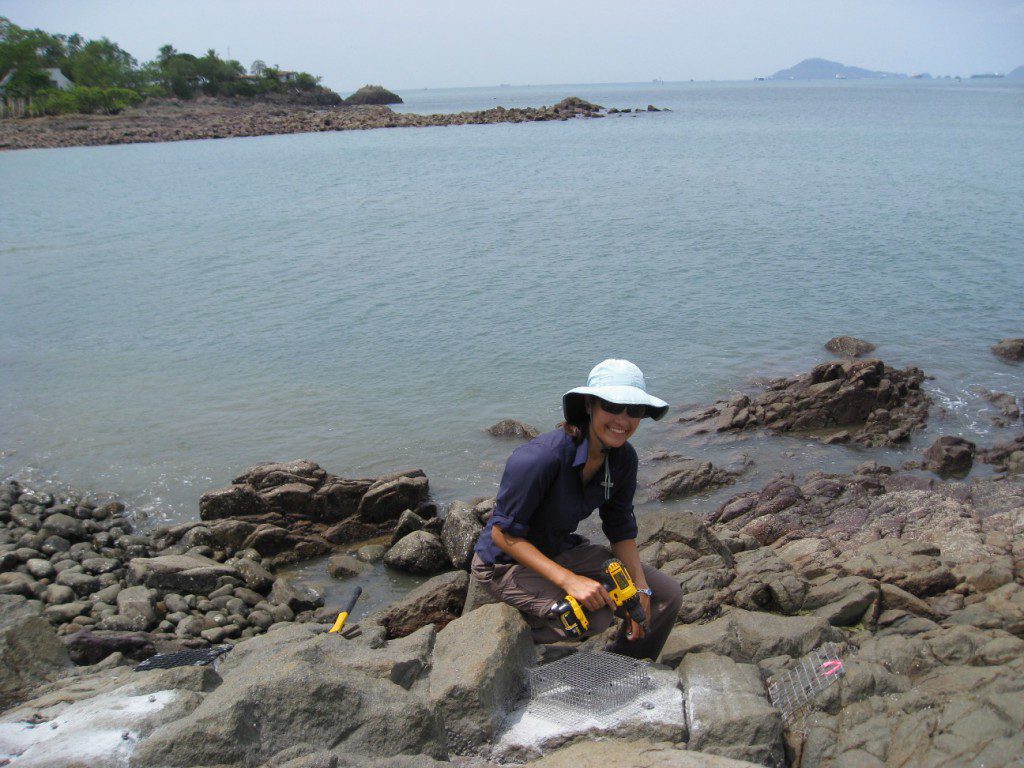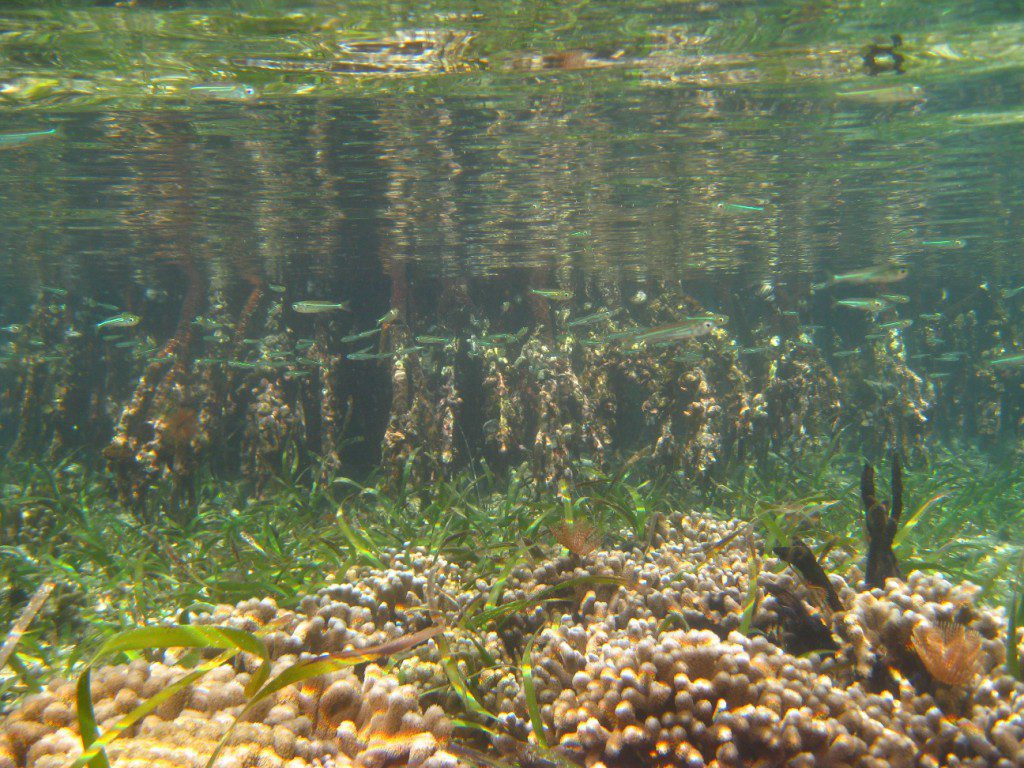A couple of months ago, we looked at the increasing number of mangroves surviving north of their range in Gulf coast marshes and wondered how it might change that habitat. On a research trip to Panama, Tanya Rogers got a good look at how mangroves interact with many species found in North Florida. There, oysters grow on trees.
Tanya Rogers FSU Coastal & Marine Lab/ Northeastern University

Installing predator exclusion cages in the rocky intertidal at Punta Culebra, on the Pacific coast of Panama.
Travel 1,100 miles due south of Miami, and before you know it you will collide with the Caribbean coast of Panama. Take a look around these shores and what will you find? Not just coral reefs as you might expect, but also seagrass beds, mangrove forests, and oysters – many of the same species, in fact, that are found in Florida, but arranged a bit differently. What are these oysters, seagrasses, and mangroves up to in the tropical parts of the world?
For a brief stint this summer I worked with Dr. Andrew Altieri at the Smithsonian Tropical Research Institute in Panama, exploring ecological questions similar to those we’ve been investigating in Florida. Dr. Altieri, much like my advisor, Dr. Kimbro, is interested in the ecology of marine communities, particularly the role of foundation species and the effects of environmental stress vs. consumers/predators in determining what grows where. In the mangroves, as well as on the rocky shores of the Panamanian Pacific coast, I helped set up several experiments using the same sort of experimental techniques as we used in Florida (cages, transplantation, etc.) to answer questions about species interactions in tropical environments. I hope I have the opportunity to return to Panama in the future as part of my graduate research.

Setting up a mangrove root transplant experiment in Bocas del Toro, on the Caribbean coast of Panama.
One interesting thing about the oysters in Panama (on the Caribbean side anyway) is that they grow almost exclusively on mangrove prop roots, and instead of one species, you can find up to five oyster species co-occurring. The oysters grow near the water’s surface, and below them the submerged roots can host an astonishing diversity of other marine invertebrates, including sponges, tunicates, anemones, and tube worms. I found it fascinating to swim below the mangroves, the roots like a maze of stalactites bedazzled with life of all colors and textures, fish darting through the labyrinth, the occasional crab deciding to take refuge on your head. Be on the lookout though for stinging box jellies, for they also enjoy these galleries. Just as in Florida, the mangroves and seagrass beds (which often border the mangroves), are important nursery habitats for juvenile fishes, which later venture out to the coral reefs.

A suite of co-occurring foundation species in Bocas del Toro: corals, seagrasses, mangroves, and oysters (growing on the mangrove roots).
